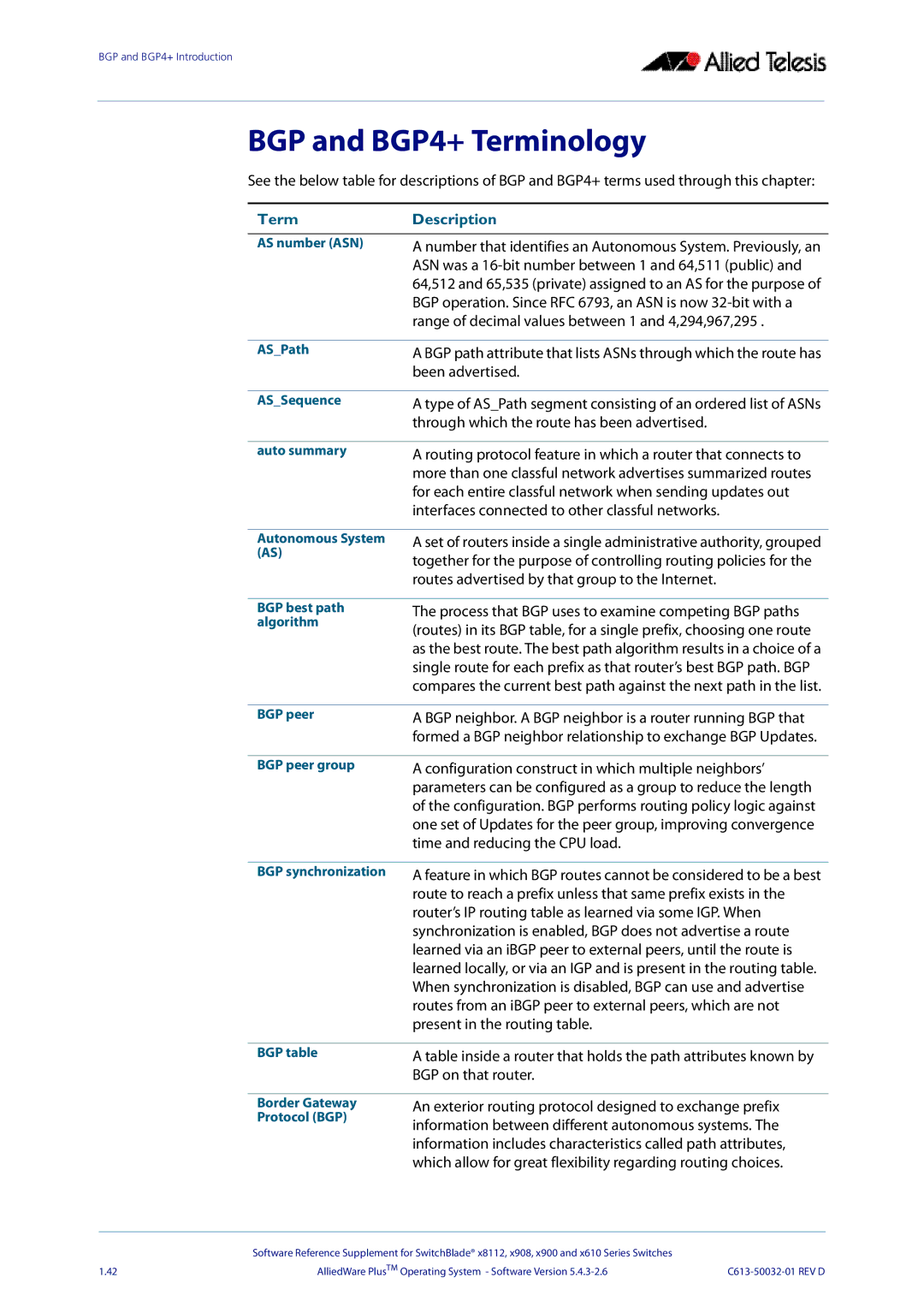
BGP and BGP4+ Introduction
BGP and BGP4+ Terminology
See the below table for descriptions of BGP and BGP4+ terms used through this chapter:
Term | Description |
|
|
AS number (ASN) | A number that identifies an Autonomous System. Previously, an |
| ASN was a |
| 64,512 and 65,535 (private) assigned to an AS for the purpose of |
| BGP operation. Since RFC 6793, an ASN is now |
| range of decimal values between 1 and 4,294,967,295 . |
|
|
AS_Path | A BGP path attribute that lists ASNs through which the route has |
| been advertised. |
|
|
AS_Sequence | A type of AS_Path segment consisting of an ordered list of ASNs |
| through which the route has been advertised. |
|
|
auto summary | A routing protocol feature in which a router that connects to |
| more than one classful network advertises summarized routes |
| for each entire classful network when sending updates out |
| interfaces connected to other classful networks. |
|
|
Autonomous System | A set of routers inside a single administrative authority, grouped |
(AS) | together for the purpose of controlling routing policies for the |
| |
| routes advertised by that group to the Internet. |
BGP best path algorithm
The process that BGP uses to examine competing BGP paths (routes) in its BGP table, for a single prefix, choosing one route as the best route. The best path algorithm results in a choice of a single route for each prefix as that router’s best BGP path. BGP compares the current best path against the next path in the list.
BGP peer | A BGP neighbor. A BGP neighbor is a router running BGP that |
| formed a BGP neighbor relationship to exchange BGP Updates. |
|
|
BGP peer group | A configuration construct in which multiple neighbors’ |
| parameters can be configured as a group to reduce the length |
| of the configuration. BGP performs routing policy logic against |
| one set of Updates for the peer group, improving convergence |
| time and reducing the CPU load. |
|
|
BGP synchronization | A feature in which BGP routes cannot be considered to be a best |
| route to reach a prefix unless that same prefix exists in the |
| router’s IP routing table as learned via some IGP. When |
| synchronization is enabled, BGP does not advertise a route |
| learned via an iBGP peer to external peers, until the route is |
| learned locally, or via an IGP and is present in the routing table. |
| When synchronization is disabled, BGP can use and advertise |
| routes from an iBGP peer to external peers, which are not |
| present in the routing table. |
|
|
BGP table | A table inside a router that holds the path attributes known by |
| BGP on that router. |
Border Gateway Protocol (BGP)
An exterior routing protocol designed to exchange prefix information between different autonomous systems. The information includes characteristics called path attributes, which allow for great flexibility regarding routing choices.
| Software Reference Supplement for SwitchBlade® x8112, x908, x900 and x610 Series Switches |
|
1.42 | AlliedWare PlusTM Operating System - Software Version |
